Similar as described for Microcystis in the previous posting from this category, most organisms introduced in this posting are able to form large algal blooms. Such blooms are deleterious to other organisms (in particular to vertebrates), because degradation of the accumulating algal mats uses up much oxygen resulting in suffocating conditions and because many of such cyanobacteria are producing effective and stable toxins. The only organism not involved in such blooms is Spirulina, which, in contrast, is rather used as a dietary supplement for human (and animal) nutrition. Although this practice is very old, it is still difficult to prove or disprove the effectiveness of such supplements.
Anabaena presents the most simple form of cyanobacterial filament formation. Roundish cells similar to those from non-filamentous cyanobacteria are attached to each other in the form of a filament. From time to time heterocysts (of slightly larger size) necessary for nitrogen fixation are included in such filaments. In addition to its involvement in algal blooms, one species (Anabaena azollae) can form a symbiosis with the water fern Azolla.
- Anabaena
- Anabaena
In the case of Aphanizomenon, normal cells and heterocysts are more adapted to filament formation…
- Aphanozimenon
… and this adaptation goes even further in the case of Lyngbya, with its flat cylindrical cells.
Spirulina is formed in a similar way as Lyngbya from small cylindrical cell. In microscopic images from this cyanobacterium, these cells are hard to see. So I chose a presentation showing only the outer form of this interesting bacterium.

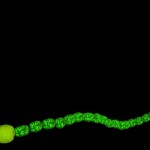
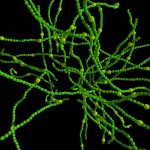
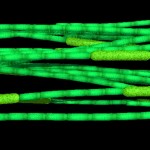
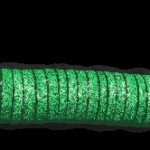
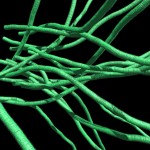
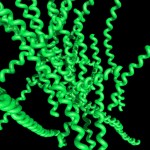
Cyanobacteria may possess the ability to produce substances that could one day serve as anti-inflammatory agents and combat bacterial infections in humans.